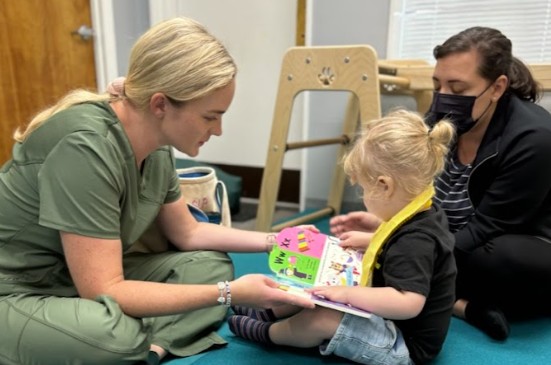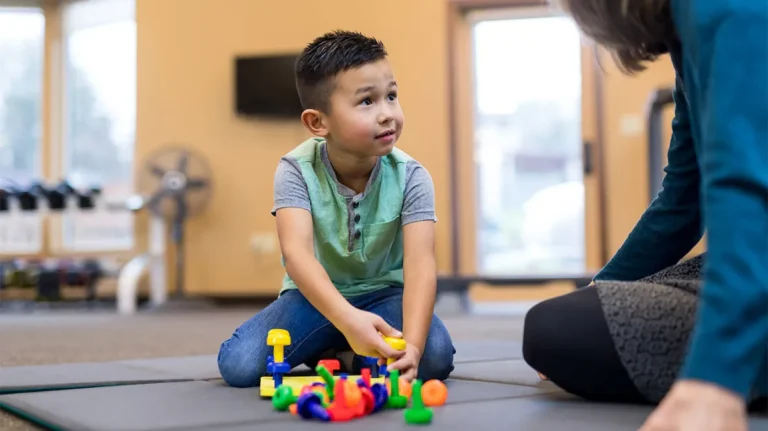
Building Confidence Through Speech and Therapy Support
Watching your child discover words and express themselves is one of the most joyful parts of parenting. But if your child’s speech isn’t coming along as expected, you might start to worry or wonder what’s going on. If you’re noticing their words are hard to understand, or they seem to struggle getting the right sounds out, you may have heard the term “dysarthria” and felt unsure of what it means—or what to do next.
The good news? You aren’t alone, and there’s a lot of hope. Dysarthria might sound complicated, but knowing what it is and how to help can make a world of difference. Let’s break it down together, answer your biggest questions, and give you concrete steps to support your child’s communication journey.
What is Dysarthria Anyway?
Dysarthria is just a word professionals use to describe speech that’s tough to understand because of muscle weakness or trouble coordinating the mouth and voice. It doesn’t mean your child isn’t smart or doesn’t know what they want to say. Instead, their brain and mouth muscles just aren’t playing nicely together when it comes to talking out loud.
According toMedlinePlus, dysarthria happens when something makes it hard for a child’s muscles to move the right way for clear speech. So while your child may think up what they want to say perfectly, their muscles for talking—like those used for breathing, moving the lips, tongue, or even the vocal cords—have a tougher time carrying out the plan.
But here’s something important: Children with dysarthria can understand everything that’s being said, and their ideas are just as bright as ever. The challenge is in getting their words out clearly for others to hear.
Dysarthria vs. Dyslexia: What’s the Difference?
You may have also heard the term “dyslexia,” and it’s easy to wonder if the two are related. While both can affect how children communicate and learn, they are actually quite different:
- Dysarthria is all about difficulties with speaking due to muscle weakness or coordination problems. Kids with dysarthria know what they want to say, but their speech can sound slurred, slow, or mumbled because the muscles used for talking aren’t working as smoothly as they should.
- Dyslexia, on the other hand, is a learning difference that mainly affects reading and writing skills. It doesn’t impact the muscles used for speech. Instead, children with dyslexia may have trouble recognizing written words, matching letters to sounds, or spelling. Their spoken language and speech clarity are usually just fine.
Here’s a simple way to remember the difference:
- Dysarthria = trouble saying words clearly (speech muscles)
- Dyslexia = trouble reading or spelling words correctly (language processing)
Both conditions can impact a child’s confidence and school experience, but they require different types of support and intervention. Recognizing which challenge your child is facing is the first step toward getting the right kind of help.

Why Does Dysarthria Happen?
There are lots of reasons a child might develop dysarthria, and they’re usually related to differences in how the brain or muscles work. Here are some common causes:
- Cerebral palsy: This is the most common condition linked with dysarthria. It affects movement and muscle coordination.
- Head injuries: Accidents or falls that affect the brain can sometimes lead to speech muscle difficulty.
- Genetic differences: Some inherited conditions make the muscles weaker or harder to coordinate.
- Infections, tumors, or rare diseases: Occasionally, an illness or medical condition can affect the muscles needed for speech.
No matter where it comes from, every child’s experience with dysarthria is different. Some might have mild slurring of words, while others have a bit more trouble getting their message across. Sometimes, families might not know the exact reason, and that’s okay—what matters most is finding the right support.
What Does Dysarthria Look Like?
Spotting dysarthria can feel tricky, especially since many young kids are still learning to talk clearly. These signs can help you notice when it’s time to ask for extra help:
Speech sounds:
- Slurred, mumbled, or “fuzzy” speech
- Words that run together or drop off
- Trouble making certain sounds—even ones they used to say clearly
- Speech that’s hard for people outside your family to understand
Voice and rhythm:
- Voice is quieter, hoarse, or sounds strained
- Speech is too fast, too slow, or has a “stop-and-go” rhythm
- All sentences sound the same without much expression
Physical cues:
- Struggles moving their lips, tongue, or jaw
- Drooling or trouble managing saliva
- Difficulty chewing or swallowing food
It’s normal for some of these things to show up from time to time, but if they stick around or make everyday conversations tough, you might want to check in with a professional.
How Can Dysarthria Affect Everyday Life?
Speech is such a big part of how kids connect, share, and learn. When dysarthria gets in the way, it can show up in a few areas:
- At school: It might be hard to answer questions in class, join in with friends, or read out loud if others can’t understand them easily.
- With friends: Some kids might feel shy, frustrated, or left out if talking is tough—or avoid talking altogether.
- Confidence: After a few misunderstood words, it’s easy for a child to start doubting themselves, even if they have great ideas.
But here’s what’s hopeful: With the right support, these challenges don’t have to get in the way of a happy, successful childhood. Kids are amazingly resilient, and small improvements can unlock big changes in confidence and connection.
Why Early Support Matters
You might hear people talk about “intervention” or starting therapy early. Basically, this just means jumping in with help as soon as you notice your child struggling. Young minds and muscles are wonderfully adaptable—so the sooner kids get support, the easier it is to build new skills and confidence.
Families who get help early also learn powerful ways to cheer their children on, build skills at home, and make every day a little smoother. Reaching out for help is a sign of love and hope, never failure.

What Help is Available?
You’re not expected to figure this all out on your own! Speech-language pathologists (SLPs) are experts trained to work with dysarthria. They start by getting to know your child, understanding their unique strengths, and finding the best ways to support them.
Some therapy techniques an SLP might use include:
- Fun exercises to make mouth and speech muscles stronger
- Activities to help your child coordinate moving their tongue, lips, and breath
- Breathing tricks to make words clearer and louder
- Strategies for slowing down or practicing clear speech
- Introducing helpful tools or tech if needed (like communication apps)
Sometimes, your child might also work with occupational or physical therapists, especially if muscle movement or other skills are involved.
How Can Parents Help at Home?
You’re a huge part of your child’s progress! Here’s how you can build a supportive and encouraging environment:
- Be patient and give your child time to finish their thoughts
- Gently ask for repeats if you don’t understand—let them know you want to hear what they have to say
- Celebrate every effort and improvement, no matter how small
- Practice speech games, read books together, sing songs, and encourage playful conversation
- Stay connected with your child’s therapy team for ideas and progress updates
Remember, progress isn’t always a straight line. Some days will feel easier than others—what matters most is that your child feels loved, supported, and heard.
Looking Ahead: Hope and Bright Possibilities
Dysarthria may be part of your child’s story, but it doesn’t decide their future. With patience, encouragement, and guidance, many children make wonderful progress. Therapy is more playful than you may think, and every new word, every clearer sentence, is a reason to celebrate together.
Families and kids who walk this journey often discover unexpected strengths along the way—like resilience, creativity, and compassion. And you’ll never walk it alone; specialists and support teams are here to cheer you on.
How Therapy Smarts Can Help
If you’re wondering about the best way to support your child’s speech or feeding needs, Therapy Smarts is here to help. We offer bothspeech therapy andfeeding therapy tailored to each child’s unique strengths and challenges.
With offices in both Durham, NC and Chapel Hill, NC, we make it easier for families throughout the area to access care. Plus, we’re proud to work hand-in-hand with local schools—advocating for and supporting children in both academic and home settings. Whether you’re just beginning this journey or are looking for a fresh approach, our friendly, knowledgeable team is on your side every step of the way.

Why Choose Therapy Smarts for Your Family?
Reach out to Therapy Smarts today to learn more about speech therapy for children or get started. Your child’s voice—and their confidence—deserves to shine. If you’re worried about your child’s speech, trust that concern and reach out for help. You can start with your pediatrician or connect directly with a speech-language pathologist for an evaluation. The sooner you ask, the sooner your child can start making progress.
Our speech therapy team at Therapy Smarts truly understands how much you care about your child’s future. We offer thoughtful evaluations, friendly therapy, and a partnership with parents that puts your child’s happiness and growth first.
Don’t let worries about unclear speech overshadow your family’s joy and connection. Every child deserves the chance to be heard—and with some teamwork, encouragement, and the right kind of therapy, your child can build skills that open up a world of possibilities.
LET’S COLLABORATE
Are you looking to feature an innovative pediatric therapy practice in your next article, podcast, or community spotlight? Therapy Smarts, with locations in Durham and Chapel Hill, NC, is proud to be a trusted leader in child-focused therapy services, including physical therapy, occupational therapy, speech therapy, ABA therapy, and mental health support.
Media Contact: Tildsley Clifford McManus, PR & Marketing Manager Email: pr@therapysmarts.net Call: (919) 378-1340
ABOUT THERAPY SMARTS
Through play therapy, exploration of their environment, and joyful engagement- Therapy Smarts of Durham and Chapel Hill help improve your child’s communication, motor, behavior, & social skills. Click below to learn more about our services.
OIN OUR TEAM
Are you a pediatric therapist looking to grow your career with a supportive, innovative team? Join Therapy Smarts of Durham and Chapel Hill — recently ranked #1,792 on Inc. Magazine’s 2025 Inc. 5000 list of fastest-growing companies in America!
We’re passionate about helping children thrive — and helping our team members do the same. Apply today!






